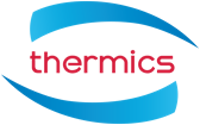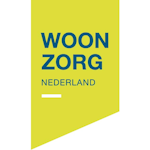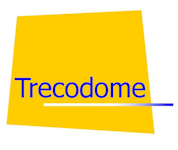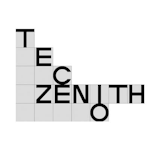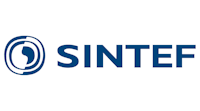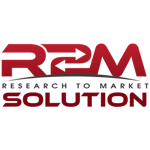4RinEU
EU H2020 4RinEU - Concetti tecnologici e modelli di business robusti e affidabili per innescare il rinnovamento profondo degli edifici residenziali in EU
- Deutsch
- English
- Italiano
- Project duration: -
- Project status: finished
- Funding: Competitive Industries (Horizon 2020 /EU funding /Project)
- Total project budget: 4.627.953,75 €
- Website: https://4rineu.eu/
- Institute: Istituto per le energie rinnovabili
4RinEU definirà una serie di soluzioni tecnologiche solide, convenienti e adattabili per la riqualificazione energetica degli edifici, insieme a metodologie e modelli di business realistici che saranno di supporto ai progettisti e agli stakeholder del settore.
Il progetto ridurrà il rischio di errori sia in fase di progettazione sia in quella di implementazione, organizzando tutte le fasi della riqualificazione a partire dall’audit preliminare fino al termine della vita utile degli elementi e fornirà informazioni sulle prestazioni in relazione all’utilizzo dell’energia, al comfort, all’influenza degli utenti e sull’efficacia dell’investimento iniziale.
La strategia di riqualificazione energetica promossa da 4RinEU è basata su 3 pilastri principali: i) le tecnologie, in grado di ridurre il fabbisogno di energia primaria del 60-70% dopo l’intervento e di ridurre il costo del ciclo di vita dell’edificio del 15%; ii) le metodologie, per supportare la progettazione e l’implementazione delle tecnologie sostenendo la progettazione partecipata, migliorando il flusso dei dati e la condivisione delle informazioni tra i vari stakeholder e dimezzando i tempi di durata del cantiere; iii) i modelli di business, per aumentare il livello di fiducia di chi investe nella riqualificazione energetica, permettendo di avvicinare il target di rinnovamento annuo del patrimonio edilizio europeo del 3% entro il 2020.
I 10 risultati principali di 4RinEU, sviluppati intorno ai tre pilastri del progetto, permetteranno di raggiungere i seguenti obiettivi:
Tecnologie: ridurre della domanda energetica (1.facciata prefabbricata multifunzionale, 2.strategie di ventilazione a soffitto); migliorare le condizioni operative degli edifici (3.Plug&Play Energy Hub, 4.tool per l’ottimizzazione delle RES da installare), migliorare il funzionamento dell’edificio (5. Sensible data handler) e diminuire gli scarti dei materiali da costruzione (6.strategie di gestione dello smaltimento dei materiali costruttivi)
Metodologie: comprendere in maniera accurate le potenzialità di rinnovamento degli edifici (7.Cost-Optimal Energy Audit), assicurare un processo di progettazione partecipata ed efficace (8.strumento di progettazione “user-oriented” e basato su BIM), ridurre i tempi di costruzione e il rischio di errore in cantiere (9.strumenti per la gestione ottimizzata del processo di riqualificazione)
Business Model: identificare il livello di rischio del processo di rinnovamento e sbloccare investimenti supportati da strumenti finanziati adatti (10.sistema per definire la priorità degli interventi).
4RinEU aims at building deep renovation balancing investment and performance targets, by defining robust, cost-effective, tailorable, deep renovation technology packages supported by usable methodologies, feeding into reliable business models. The project will minimize risk of failures in the whole value chain, as well as the uncertainties in timing, costs, performance results, exploring different ways to trigger deep renovation actions, allowing a meaningful EU replication. The reliable business models that we will define within 4RinEU will make investors (single owner, multi-owners, social housing organizations, large real estates, developers) more confident in all the renovation phases. Indeed, EU defined a framework to foster the energy efficiency based on the assumption of smart finance for smart buildings, strengthening the concept of bankable projects able to convince private investors offering a reliable investment environment.
Buildings are long-term assets expected to remain useful for 50 or more years and 75-90% of those standing today are expected to remain in use in 2050. With low demolition rates (0.1% per year), and low rate of new highly energy efficient buildings (1% added per year), EU energy efficiency challenge in buildings mainly concerns the investments in renovation of the existing buildings stock (presently at a rate of 1.2% per year).
Energy Efficiency Financial Institutions Group recommends the development of common set of procedures and standards for energy efficiency and building renovation underwriting for both debt and equity investments. Several renovation technologies are available but the application is limited because of different key barriers:
- Technical: lack of easy to apply, integrated, tailorable packages;
- Social: no easy access to information on right behaviours, best practices and strategies for achieving environmental comfort and energy saving, lack of commitment of the users;
- Credibility: uncertainties in term of actual performances and costs as well as responsibilities in case of delay or failures;
- Financial: lack of access to affordable finance to carry out the renovation.
IEA estimated that applying the current policies and common practices, less than 20% of the economically viable energy efficiency investments will be realized within 2035. Therefore, there is a clear need of robust concepts and reliable approaches to increase the investors’ confidence and to up-scale the energy efficiency investment. In fact, due to long-lasting, ‘layered’ structured renovation process, failure risks, and the typical top-down, supply driven structure of the European building market with a mismatch between offer and user needs and assets, owners/investors hesitate to renovate their properties.
4RinEU has the overall objective to define robust, cost-effective, tailorable, deep renovation technologies and usable methodologies, feeding into reliable business models. The project will address the development of approach to minimize failures in design and implementation of deep renovation, managing different stages of the process, up to the end-of-life, and providing base information and high-level knowledge on energy, comfort, users’ impact, investment performance.
4RinEU deep renovation strategy is based on three pillars: robust technologies, usable methodologies and reliable business models addressing the following challenges.
- Technology development (driven by robustness) to improve key passive, active, and control solutions, optimizing the integration and interactions among building components in dynamic contexts, ensuring a drastic reduction of net primary energy use (60 to 70%) compared to pre renovation levels) for different building working conditions, high indoor environmental quality, building functionality, architectural value, allowing reduction of life cycle costs (15% compared to a typical renovation).
- Methodology development (driven by usability) to support the design and implementation of robust, tailorable, cost-effective deep renovation packages in different boundary conditions, through multi-objective optimization, ensuring reduction of implementation time (by a factor of 2 compared to typical renovation through pre-fabrication and specific solutions for the management of the building site), and keeping the same performance level in the whole building life cycle.
- Business models development (driven by reliability) to trigger EU building stock transformation, durably increasing the renovation rate up to 3% before 2020, as fixed by “renovate-Europe” campaign. This will be sustained by a reliable economic viability of deep renovation, quantified by an increased internal rate of return.
Around such these three pillars, the project 4RinEU aims to reach the following results:
Robust Technologies
- Result1: Prefab multifunctional façade
- Result2: Comfort ceiling fan smart operation
- Result3: Plug&Play Energy Hub - PPEH
- Result4: RES best use in renovation process - Early-RENo
- Result5: Sensible Building Data Handler
- Result6: Strategies for building/components end-of-life
Usable Methodologies
- Result7: Cost-optimal (investment vs achievable information) energy audit
- Result8: Investor and building user oriented design platform based on BIM
- Result9: Deep renovation implementation management
Reliable Business Models
- Result10: Cost-effectiveness rating system
The effort within 4RinEU in the development of robust technologies and usable methodologies is the key to build the concrete basement for the definition of reliable business models, that we identified as the mean for convincing to invest resources in buildings deep renovation. A 4RinEU business model is meant as a comprehensive framework, including (i) costs, (ii) benefits, (iii) role and responsibilities of the stakeholders, (iv) technical and economic level of risks making uncertainty explicit, as well as (v) possible contingency plans. It will be the driver towards deep renovation, supporting the key decision on when/why/how/ to renovate a building. The key concept is to structure technological and methodological knowledge to provide clear information to the stakeholders in order to increase the level of confidence enhancing the awareness on the cost-effectiveness of the renovation, and then fostering the spontaneous investments. In this regards, 4RinEU will develop a strong dissemination and communication plan for the stakeholders with the objective to reach both common users through simple tools (e.g. informative user-friendly cookbooks for renovation, contextualised benchmarking for building energy consumptions) and professionals through specific technical channels.
Fedrizzi R (2023)
Internet
Ulteriori informazioni: https://www.buildup.eu/en/news/overview-article-integrating- ...
Adami J (2022)
Internet
Ulteriori informazioni: https://www.buildup.eu/en/node/62244
Pinotti R (2022)
Internet
Ulteriori informazioni: https://www.buildup.eu/en/node/62746
Pernetti R, Pinotti R, Lollini R (2021)
Articolo su rivista
Sustainability
Ulteriori informazioni: https://www.mdpi.com/2071-1050/13/11/6412/htm
Secchi M, Barchi G, Macii D, Moser D, Petri D (2021)
Articolo su rivista
Applied Energy
Ulteriori informazioni: https://doi.org/10.1016/j.apenergy.2021.117171
Dallapiccola M, Barchi G, Adami J, Moser D (2021)
Articolo su rivista
Energies
Ulteriori informazioni: https://www.mdpi.com/1996-1073/14/8/2326/htm
Lollini R, Pernetti R (2020)
Articolo su rivista
Condominio: Quotidiano del Sole 24 Ore
Ulteriori informazioni: https://www.quotidianocondominio.ilsole24ore.com/art/risparm ...
Pinotti R (2018)
Internet
Ulteriori informazioni: https://www.casaeclima.com/ar_34904__Riqualificazione-energe ...
Lollini R, Giuliani M, Pernetti R, Noris F, Signore G (2018)
Internet
Ulteriori informazioni: https://www.ingenio-web.it/19003-lapproccio-integrato-alla-r ...

